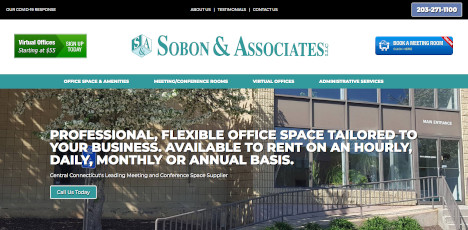If you’re reading this, you’re probably one of the many people that has wanted to get their own e-commerce site, but were too afraid to try or didn’t know where to begin. Well, believe it or not, getting your own online site is actually super easy! All you have to do is create an online retail site and start selling things. It might seem like a pipe dream at first, but think about it; How many other business owners have an e-commerce site? Probably very few. So how do you know if this is something that would be of interest to your customers? In this article we talk about what an e-commerce site is, different types of sites you could create and even give some ideas on examples that would work best for your brand.

Contrary to popular belief, launching your own e-commerce store is a surprisingly straightforward endeavor. The process involves creating an e-commerce platform and beginning to sell your products or services. While it may initially appear like an unrealistic goal, consider the number of business owners who currently operate e-commerce sites. It's likely that very few do. Therefore, how can you determine whether this is a concept that would appeal to your clientele? This article delves into the specifics of e-commerce sites, exploring the various types you could create and offering examples tailored to your brand.
What is an E-commerce Site?
An e-commerce site is a website that allows businesses to sell products or services online. It’s like having a virtual storefront where customers can browse and purchase items at their convenience. E-commerce sites have become increasingly popular in recent years due to the rise of online shopping.
With the convenience of being able to shop from anywhere and at any time, it’s no wonder that more and more businesses are turning to e-commerce to boost their sales.
Creating an e-commerce site involves a few key components. First, you’ll need a domain name that represents your brand. This is the web address that customers will use to access your site. Next, you’ll need a web hosting provider that will store your website files and make them accessible to visitors. Finally, you’ll need an ecommerce platform that will handle the backend operations of your online store, such as inventory management, payment processing, and order fulfillment.
Different Types of E-commerce Sites You Can Create
When it comes to creating an e-commerce site, there are several different types to choose from. The type of site you create will depend on your business model and the products or services you offer.
Here are some of the most common types of e-commerce sites:
1. Online Retail Store: This is the most straightforward type of e-commerce site. It’s like a digital version of a brick-and-mortar store, where customers can browse and purchase products online. This type of site is ideal for businesses that sell physical products and want to reach a wider audience.
2. Digital Products Store: If you sell digital products like ebooks, software, or online courses, a digital products store is the way to go. This type of site allows customers to purchase and download digital products instantly, without the need for physical shipping.
3. Subscription-Based Store: Subscription-based e-commerce sites offer products or services on a recurring basis. Customers pay a monthly or annual fee to access the products or services, and they receive regular deliveries or access to exclusive content. This type of site is great for businesses that offer products or services with a subscription model, such as beauty boxes or online streaming platforms.
4. Marketplace: A marketplace is a platform where multiple sellers can list their products or services for sale. Think of it like an online shopping mall, where customers can browse and purchase items from different sellers. Marketplaces are ideal for businesses that want to reach a larger customer base and benefit from the network effect.

Example E-Commerce Sites
To give you some inspiration, here are a few examples of successful e-commerce sites:
1. Amazon: As one of the largest online retailers in the world, Amazon offers a wide range of products from various sellers. They have mastered the art of personalized recommendations and seamless checkout, making it easy for customers to find and purchase what they need.
2. Etsy: Etsy is a marketplace for handmade and vintage items. It’s a community of independent sellers who create unique and one-of-a-kind products.
Etsy’s platform allows sellers to showcase their products and connect with buyers who appreciate craftsmanship and individuality.
3. Shopify: Shopify is an e-commerce platform that enables businesses to create their own online stores. It provides all the tools and features needed to set up and manage an e-commerce site, including customizable themes, secure payment processing, and inventory management.
4. Netflix: While not a traditional e-commerce site, Netflix is a prime example of a successful subscription-based business model. They offer a vast library of movies and TV shows that customers can access for a monthly fee. Their recommendation algorithm and exclusive content keep customers coming back for more.
Conclusion
Creating an e-commerce site doesn’t have to be daunting. With the right tools and strategies, you can create a successful online store that draws in customers and drives sales.
Whether you choose to set up an online store a digital products store, a subscription-based store, or a marketplace, the key is to understand your target audience and provide them with a seamless and personalized shopping experience. By following the tips and examples provided in this article, you’ll be well on your way to building an e-commerce site that stands out from the competition and attracts customers. So don’t let fear or uncertainty hold you back. Start creating your online store today and watch your business thrive in the digital world.







